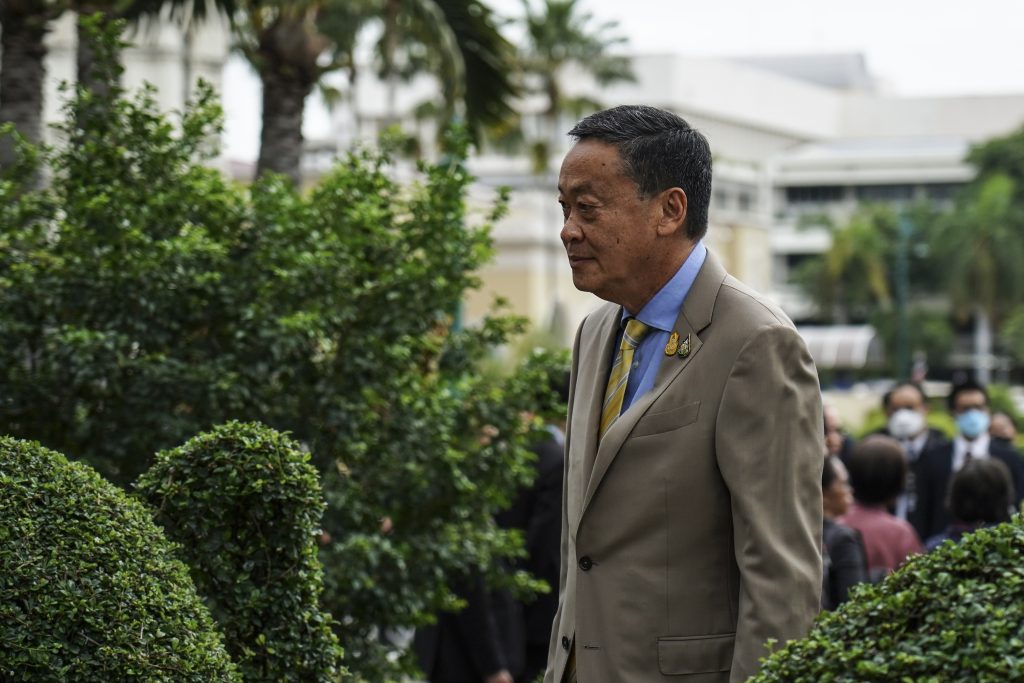Unlike other ASEAN countries, Thailand’s real GDP and GDP per capita have yet to outpace pre-pandemic figures. The Thai economy was hit hard by COVID-19 and has experienced a relatively slow economic recovery. Thailand’s large informal economy and dependence on tourism made the economy particularly vulnerable to the pandemic.
Mild economic growth in 2023 was primarily driven by activities in the travel sector, but the manufacturing sector continued to contract. Merchandise exports, a backbone of the Thai economy, continued to decline.
The new government’s short-term economic policies include a one-off digital cash payment to about 50 million residents across the country, debt relief aimed at tackling illegal loan sharks and efforts to cut energy and electric train costs. Its medium- to long-term economic measures include new free trade agreements, green industry projects and a land bridge project connecting the Gulf of Thailand with the Andaman Sea.
Even though the digital wallet scheme has faced criticism from Thai economists, including two former Bank of Thailand governors, the government has decided to continue. The economic stakes are high due to the scheme’s 500 billion baht (US$14 billion) budget and the number of recipients.
This debt-financed spending has significant fiscal implications. After a decade-long stable debt-to-GDP ratio of about 42 per cent from 2009–2018, Thailand’s public debt-to-GDP ratio rose sharply from 41.6 per cent in 2019 to 62.44 per cent in 2023. Gone are the days of low borrowing costs, so a credible fiscal plan is needed to ensure that this digital wallet scheme will not preclude other economic and social policies.
For several decades, international trade has been a key driver of Thailand’s small, open economy. Trade-led growth has accelerated structural transformation — that is, the movement of the population out of agriculture. The government is using free trade agreements (FTAs) as a tool to boost this engine of the economy. Thailand has signed 14 FTAs with 18 countries and is a member of many regional FTAs. Thai Prime Minister Srettha Thavisin is expected to visit Sri Lanka in February 2024 to sign an FTA.
While attempts to boost trade are admirable, benefits from bilateral FTAs should be taken with a grain of salt. Since 1990, global value chains (GVCs) have accounted for almost half of Thailand’s international trade. Despite the role of GVCs in development, there was little formal national policy activity around GVCs in 2023.
Signing more FTAs as an alternative to multilateral liberalisation may not serve as a silver bullet as expected. GVCs mean the cross-border dispersion of production processes within integrated global industries, enabling firms to locate production blocks across the world. The jurisdictional boundaries of a specific FTA may not increase the relative cost advantages Thailand has enjoyed.
FTAs are complicated by rules of origin. GVCs mean that each location completes specific tasks within the production network, resulting in low per-unit value added. Identification of the origin of products to derive tariff preferences may not be feasible for firms within GVCs. This is not to mention that most products are traded across borders without tariffs due to the World Trade Organization’s Information Technology Agreement. The lowering of trade barriers from a bilateral FTA has a limited effect in driving GVCs and boosting trade.
Higher productivity is necessary for Thailand’s economic recovery, and it is unclear whether demand-side stimulus alone can achieve the goal of 5 per cent economic growth in four years. Supply-side constraints could be addressed by promoting special economic zones and industrial parks. A new ‘Ease of Doing Business’ sub-committee in the Eastern Economic Corridor was set up to facilitate investment by cutting red tape and reducing cumbersome administrative procedures. Whether or not economic growth targets are attainable depends on how these supply-side constraints are resolved.
Industrial policy is back — and not only in advanced countries, but also in Indonesia, India and Malaysia. These policies come in many forms including capital injections, equity stakes and state loans. Industrial policies are often designed to increase domestic value added. But evidence from Indonesia and Thailand shows that emphasis on domestic value added is misguided and runs counter to development from engaging in GVCs.
Thavisin recently visited firms across ASEAN, Hong Kong and the United States to lure investment from big companies such as Tesla, Microsoft and Google. But there is still no formal strategic industrial policy in Thailand, except for the emphasis placed on ‘S-Curve’ and ‘new S-Curve’ industries under the Thailand 4.0 industrial development strategy introduced by the former government. The government should ensure that subsidies go to more productive firms with high employment generation effects.
In 2023, numerous Thai business groups warned that political instability could harm the investment climate, especially confidence among foreign investors. Maintaining political stability is essential. A key challenge for Thailand in 2024 and beyond is ensuring that the current coalition government led by the Pheu Thai Party can guarantee stable politics to continue economic projects as intended.
Looking ahead to 2024, Thailand faces several challenges including an ageing population, education inequality and US–China trade tensions. But policies to address these economic challenges are yet to be unveiled.
Wannaphong Durongkaveroj is Assistant Professor of Economics at Ramkhamhaeng University.


Thailand's economy, significantly impacted by the COVID-19 pandemic, has not fully recovered, with the manufacturing sector continuing to contract while merchandise exports decline. Recovery strategies include short-term methods like a one-off digital cash payment scheme and debt relief, and long-term plans involving new free trade agreements, green industry initiatives and infrastructure projects. But the country’s new government is still struggling to address challenges like an ageing population, education inequality and global trade tensions.